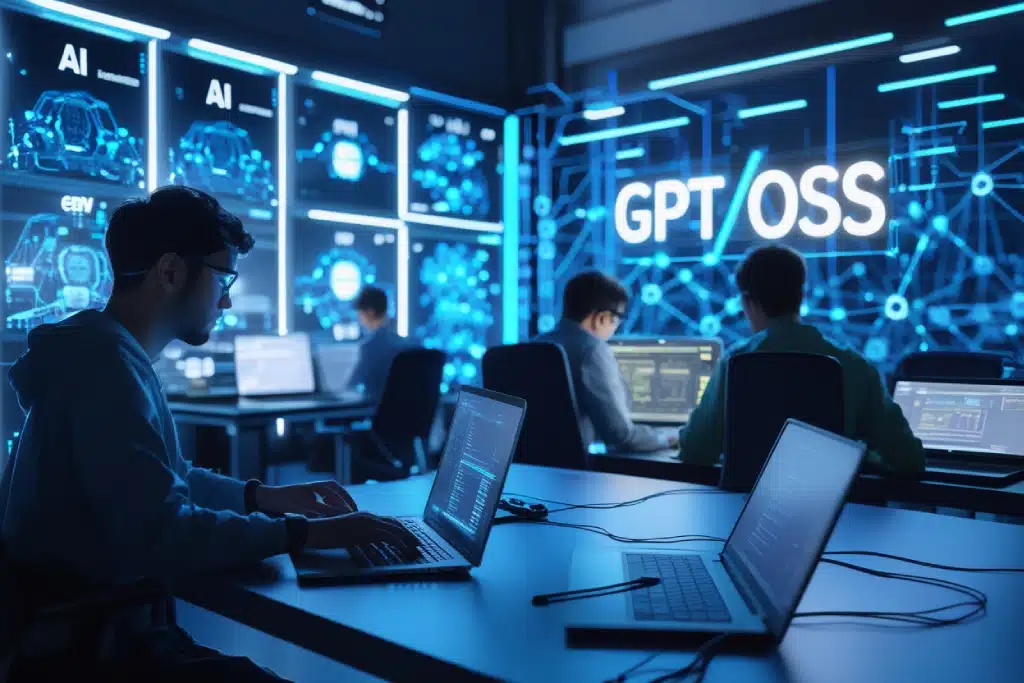What Is GPT‑OSS?
OpenAI has introduced two powerful open-weight language models, gpt‑oss‑120B and gpt‑oss‑20B, made available under the Apache 2.0 license. Unlike closed models, these allow developers and researchers to fully download, adjust, or fine-tune the model weights locally—with no need for proprietary APIs or service subscriptions.
Performance & Architecture Highlights
- gpt‑oss‑120B features approximately 117 billion parameters, matching OpenAI’s proprietary o4-mini model in reasoning capabilities. It operates efficiently on a single server-class GPU (e.g. 80 GB VRAM) and uses sparse mixture-of-experts architecture with 128 experts (4 active per token).
- gpt‑oss‑20B (~21B parameters) mirrors the performance of o3-mini models, optimized for inference on edge devices, laptops, or smartphones with just 16 GB memory.
Both models support:
- Chain-of-thought reasoning for step-by-step problem solving
- Few-shot prompt flexibility
- Agentic workflows including tool use (e.g. code execution, web search)
- Structured output formats via the OpenAI Responses API
Safety & Governance
Given their open-weight nature, OpenAI delayed the release by two months to conduct extensive safety testing. This included:
- Internal adversarial fine-tuning to simulate misuse (e.g. biotech or cyber weapon ideation)
- Evaluations by independent external safety panels
- OpenAI reports that none of the tests reached “High capability” thresholds under their Preparedness Framework
Strategic Significance
This marks OpenAI’s first open-weight model release since GPT‑2 in 2019, and reflects a strategic pivot toward greater transparency and accessibility in AI. CEO Sam Altman described GPT‑OSS as a return to OpenAI’s roots—advancing democratic access to AI amid growing competition from companies like DeepSeek, Mistral, and Meta.
Adoption & Ecosystem Integration
Major cloud platforms now support GPT‑OSS models:
- Amazon Bedrock & SageMaker provide enterprises easy access to hosted fine-tuning and inference with privacy compliance.
- Microsoft Azure AI Foundry & Windows AI Foundry enable developers to deploy models in secure, on-device environments, including laptops and edge devices.
NVIDIA has delivered optimized inference performance on its Blackwell GB200 clusters, reaching throughput rates of over 1.5 million tokens/sec on gpt‑oss‑120B.
Real-World Use & Applications
GPT‑OSS is ideal for:
- Edge and offline applications (e.g. on-device agents)
- Custom domain fine‑tuning (legal, health, finance)
- Scenarios demanding privacy and low latency
- Experimental reasoning workflows where users control chain-of-thought settings
Why GPT‑OSS Matters
| Benefit | Why It Matters |
|---|---|
| Developer control | Full access to model internals and weights |
| Cost-efficient deployment | Models run locally without API usage fees |
| Privacy & compliance | Data stays in-house, not sent to external servers |
| Research & innovation | Easier to experiment and customize open architectures |
Broader Impacts
GPT‑OSS signals a resurgence in open models, restoring a balance between enterprise AI services and democratized innovation. It may herald a new wave of open AI infrastructure, positioning OpenAI as both a platform provider and a contributor to the public model ecosystem.
FAQ Snapshot
Is GPT‑OSS truly open-source?
Not fully. Only model weights, tokenizer, and inference code are public. Training datasets and code remain proprietary.
Can it be fine‑tuned for specific applications?
Yes. GPT‑OSS supports standard fine-tuning via Hugging Face or frameworks like Databricks and AWS.
Are there safety concerns?
OpenAI conducted preliminary adversarial safety testing. Open-weight models carry theoretical risk, but internal evaluations showed no high-level misuse capability.
How does it differ from models like LLaMA or DeepSeek?
GPT‑OSS matches or outperforms those models on core reasoning benchmarks, with deeper support for agentic workflows and structured reasoning. It also benefits from OpenAI’s production safety alignment.
Final Note
OpenAI’s GPT‑OSS models epitomize a new era for accessible, transparent and high-performing AI infrastructure. By supporting everything from local edge deployment to enterprise agents via AWS and Azure, they open doors for innovation—while pressing legacy and emerging competitors to raise the bar.
Stay tuned for updates as broader adoption rolls out, and watch how developers and enterprises integrate these models into future workflows.


